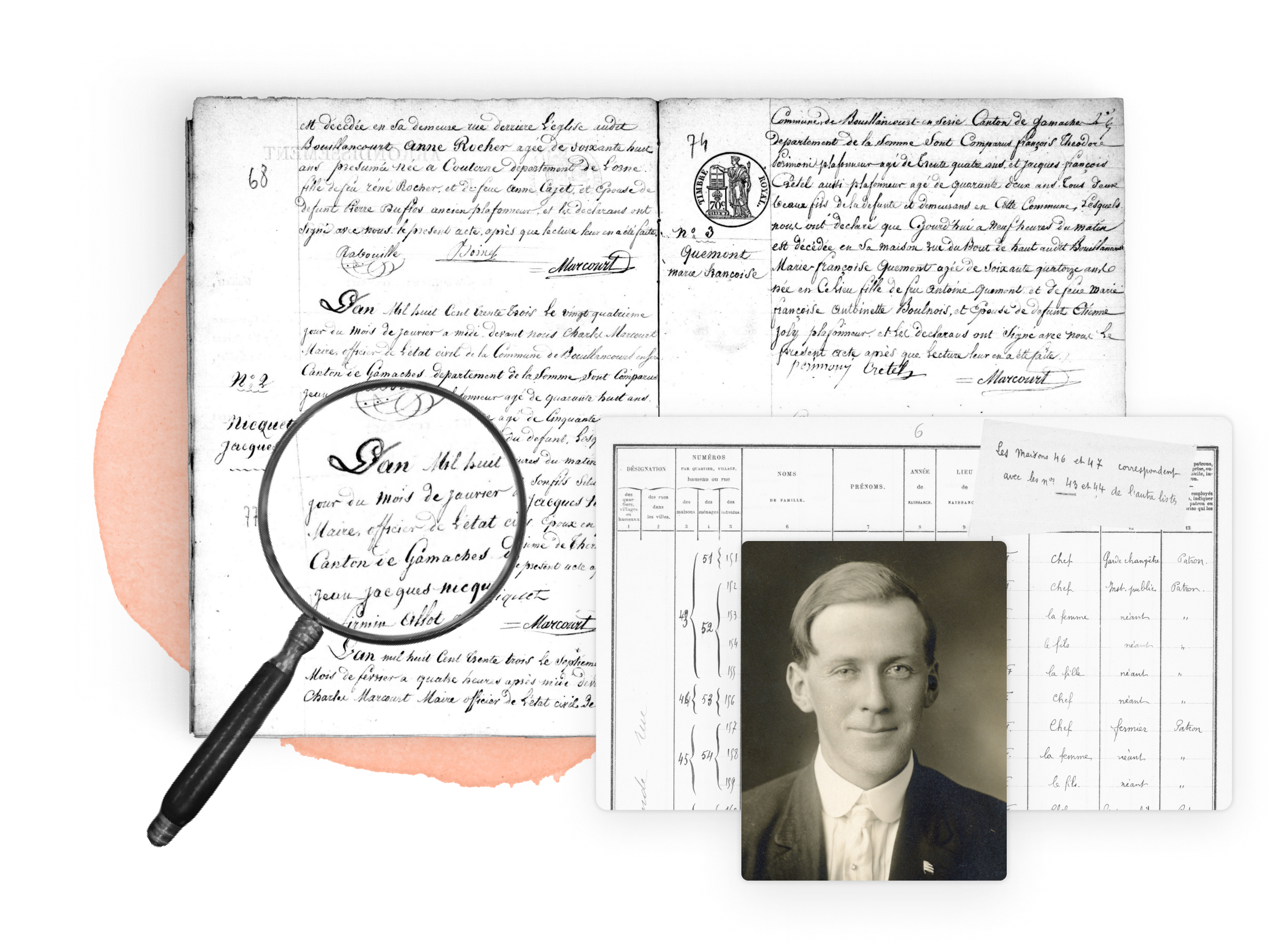Polish emigration refers to the process whereby people whose ethnic and social roots lie in Poland have left the Polish region over the last several centuries and relocated to live in other parts of the world. The lands involved have not always been synonymous with a Polish state. For instance, much of this emigration occurred between 1795 and 1918 when there was no Polish state to speak of and various parts of the country were ruled by Prussia/Germany, Russia and Austria. Indeed this lack of political representation at home and the economic disenfranchising of the Poles as a result was one of the main drivers of Polish emigration in the nineteenth century. Several million Poles emigrated from their homeland during the period between the 1790s and the late 1910s. More recently, the Second World War and the Cold War both led to Polish emigration in order to avoid political repression at home, while entry into the European Union in 2004 led to over two million Poles migrating around Europe. Today the Polish diaspora is strong in the United States, Canada, Brazil, Argentina, France, Ireland, the Netherlands, Belgium and the United Kingdom, as well as countries immediately neighboring Poland like Belarus, Germany and Lithuania.[1]
Research your ancestors on MyHeritage
History of Polish emigration
Like most other European countries, emigration was a relatively rare thing in the Kingdom of Poland and the Polish-Lithuanian Commonwealth that followed it in late medieval and early modern times. We find evidence of small numbers of people emigrating from Poland to faraway lands, such as the handful of Poles who arrived to the English colony at Jamestown in Virginia in 1608, but for the most part mass migration of any kind didn’t occur prior to the modern era. Poland lay too far from the Atlantic Ocean, travel methods were limited in an age before railways and steamships, and in any event Eastern Europe was comparatively thinly populated and was usually able to support its population on at least a subsistence level.[2]
This all began to change from the late eighteenth century onwards as industrialization, population expansion owing to medical advances and urbanization ushered in the modern era. As this happened people began leaving Europe in droves, taking advantage of the new steamships that could carry them across the Atlantic Ocean to the Americas from the 1840s onwards. Hence, the western hemisphere became the conduit for the relieving of Europe’s booming population. In Poland’s case there was a region specific spur towards mass migration. The Poles also had become politically, socially and economically disenfranchised as the Partitions of Poland brought the Polish state to an end between 1772 and 1795 to the territorial benefit of Russia, Austria and Prussia.[3]

While there was a growing flow of Polish emigrants from the 1790s onwards, things increased dramatically in the late 1840s. First the advent of the potato blight across Europe decimated what had become a subsistence crop in Poland and induced famine conditions. This in turn precipitated the Greater Poland Uprising in the spring of 1848, part of the wider Age of Revolutions. Once that was suppressed, a huge flow of Polish emigrants from Europe to the Americas began. Millions of Polish people headed across the Atlantic Ocean between the 1840s and the 1920s.[4]
While the initial flow of emigration declined prior to the First World War, and was further stemmed by the emergence of a new Polish nation state in 1918, political oppression began again with the outbreak of the Second World War in 1939. Poland was the first country invaded by Nazi Germany and 150,000 or so Poles fled the country, most leaving for the United Kingdom. Many would remain there after the war. Political emigration and exile of this kind remained a feature of life in Poland for most of the remainder of the twentieth century as the Nazis were replaced by the Soviets in 1944 and Poland became a member of the communist bloc in the ensuing Cold War.[5]
Finally, the accession of Poland as a member of the European Union in 2004, as part of the mass enlargement of the EU that year, saw a new wave of mass emigration from Poland commence. Polish people were now able to travel freely to and work in countries like Germany, France, Ireland and the Netherlands where they could earn substantially more than at home in Poland. Many would have planned on working for several years and then returning home, but inevitably many laid down roots and remained abroad. Between 2004 and 2007 upwards of two and a half million Poles emigrated.[6]
The Polish diaspora

The Polish diaspora that has emerged as a result of two centuries of Polish emigration is considerable. There are an estimated nine million Polish Americans today. This community, accounting for about 2.7% of the US population, is the byproduct of an intense period of emigration from Poland to North America between the 1870s and the 1900s in particular, during which time nearly two million Poles arrived to the United States. They settled in especially large numbers in several emerging industrial cities of the time in the states of Pennsylvania, Maryland, Delaware, West Virginia, Ohio, Indiana, Michigan and Illinois. Chicago, Cleveland, Philadelphia and New York are major cities with Polish American communities, while the town of Cheektowaga in the west of the state of New York near the Great Lakes has the distinction that two out of every five people living there are of Polish heritage, such was the level of Polish migration here in the late nineteenth and early twentieth centuries.[7] The Polish American community was so substantial by the middle of the twentieth century that the US government appealed explicitly to Polish sentiment during the Second World War on account of their homeland being occupied by the Nazis back in Europe. 180,000 Polish Americans served during the conflict.[8]

While Polish settlement was at its most substantial in the western hemisphere in the United States, a million Canadians today claim Polish heritage, while upwards of two million Brazilians and half a million Argentines have Polish ancestors attesting to emigration from Poland to South America over a century ago.[9] There are over three-quarters of a million Poles in the United Kingdom. The basis for the Polish community in Britain was laid down when 150,000 or so exiles fled there in 1939 after the start of the Second World War. Many remained as a result of the Polish Resettlement Act of 1947. The long roots of the community here ensured that hundreds of thousands of Poles arrived to Britain following EU accession in 2004.[10]
There are around 125,000 Polish people in Ireland, making them the largest minority community in the country. The Polish Irish community has developed entirely in the last two decades following Polish entry into the European Union.[11] There are between three and five million people of Polish extraction living in Germany, but such is the overlap between the two countries historically that this is to be expected. Similarly, 200,000 Poles live in neighboring Lithuania, over 6% of the population.
Explore more about Polish emigration
- Ellis Island and Other New York Passenger Lists, 1820-1957 records collection on MyHeritage
- Beginning Polish Genealogy at Legacy Family Tree Webinars
- Polish Communities – Migration and Resettlement at Legacy Family Tree Webinars
- Using MyHeritage to research Polish family history and to find living relatives in Poland at Legacy Family Tree Webinars
- Polish genealogy online – portals and databases at Legacy Family Tree Webinars
- United States, New York, Immigration from Austria, Poland and Galicia, 1890-1891 from JewishGen records collection on MyHeritage
References
- ↑ Dorota Praszałowicz, ‘Poland’, in Klaus J. Bade, et al. (eds), The Encyclopedia of European Migration and Minorities (Cambridge, 2011), pp. 143–151.
- ↑ https://encyclopediavirginia.org/entries/polish-settlers-at-early-jamestown/
- ↑ https://www.loc.gov/classroom-materials/immigration/polish-russian/the-nation-of-polonia/
- ↑ Stefan Kieniewicz, ‘The Social Visage of Poland in 1848’, in The Slavonic and East European Review, Vol. 27, No. 68 (December, 1948), pp. 91–105.
- ↑ https://blog.nationalarchives.gov.uk/the-displacement-of-poles-and-their-subsequent-resettlement-in-the-united-kingdom-1939-1949/
- ↑ http://focus-migration.hwwi.de/typo3_upload/groups/3/focus_Migration_Publikationen/Laenderprofile/CP03_Poland_Update.pdf
- ↑ https://www.loc.gov/classroom-materials/immigration/polish-russian/the-nation-of-polonia/
- ↑ https://pressbooks.ulib.csuohio.edu/polish-americans-and-their-communities-of-cleveland/chapter/poles-in-world-war-ii/
- ↑ Anna Katherine Dvorak, ‘A Hidden Immigration: The Geography of Polish-Brazilian Cultural Identity’ (PhD dissertation, University of California, 2013).
- ↑ https://www.legislation.gov.uk/ukpga/Geo6/10-11/19/enacted
- ↑ https://www.thejournal.ie/polish-language-in-ireland-5725255-Mar2022/


